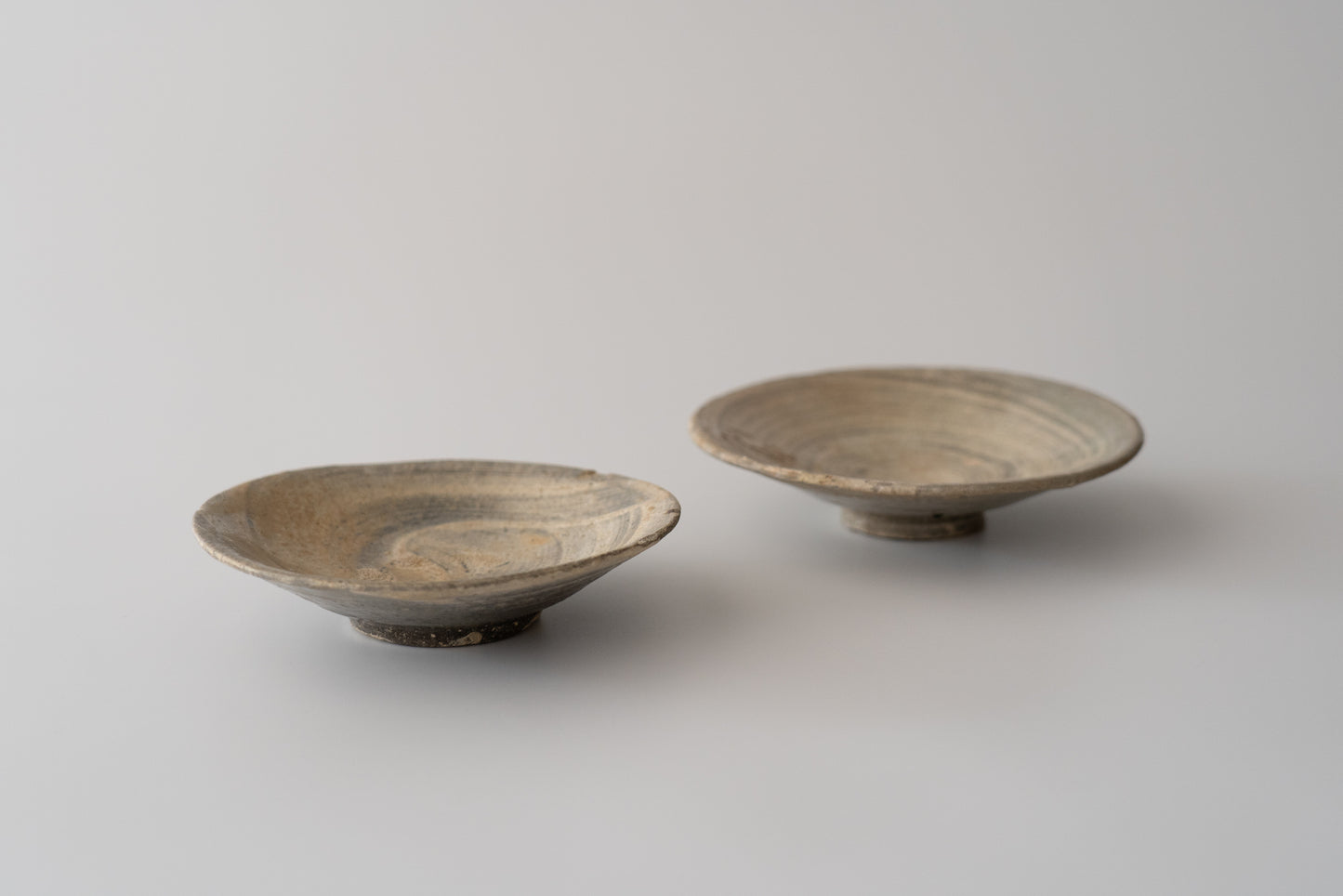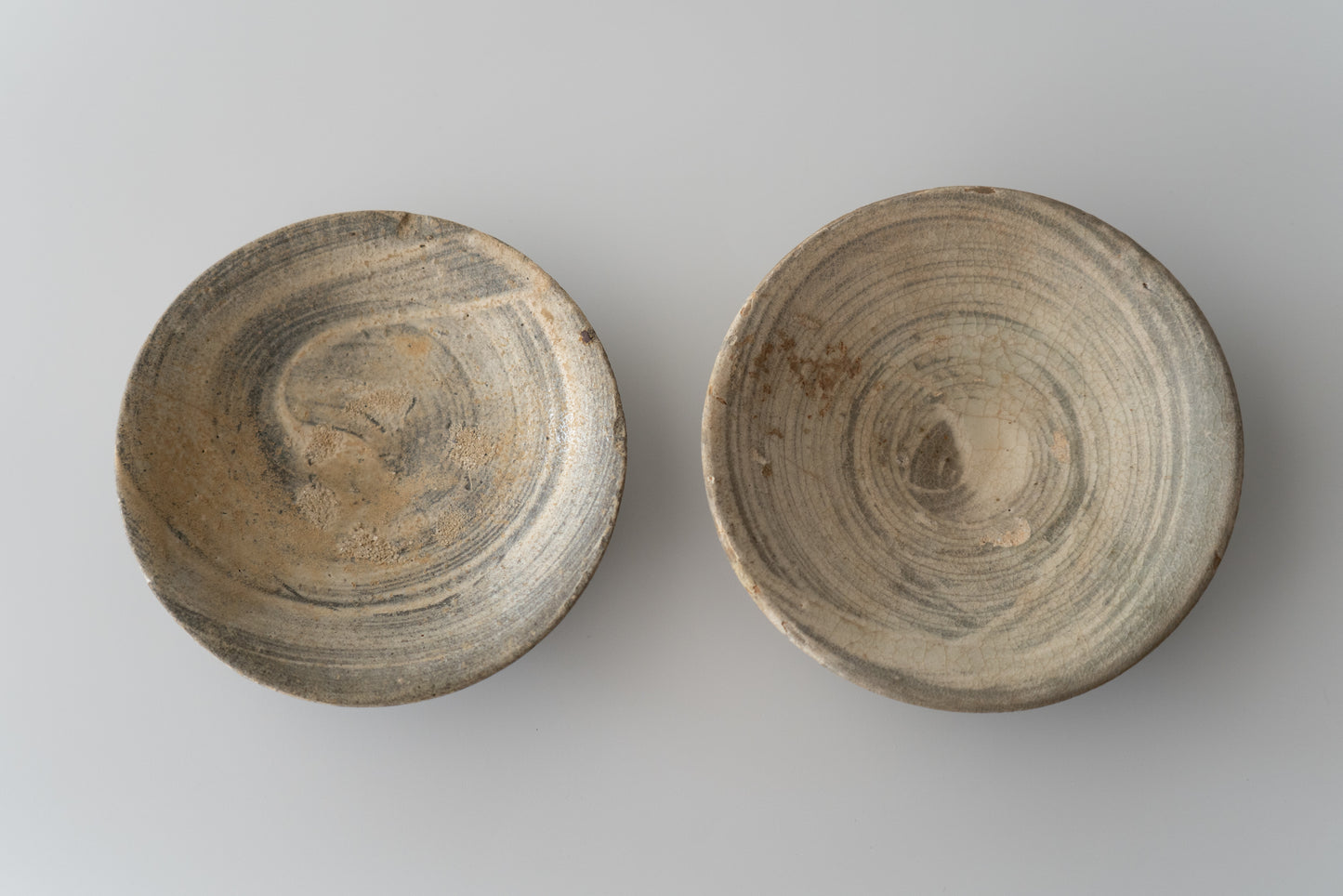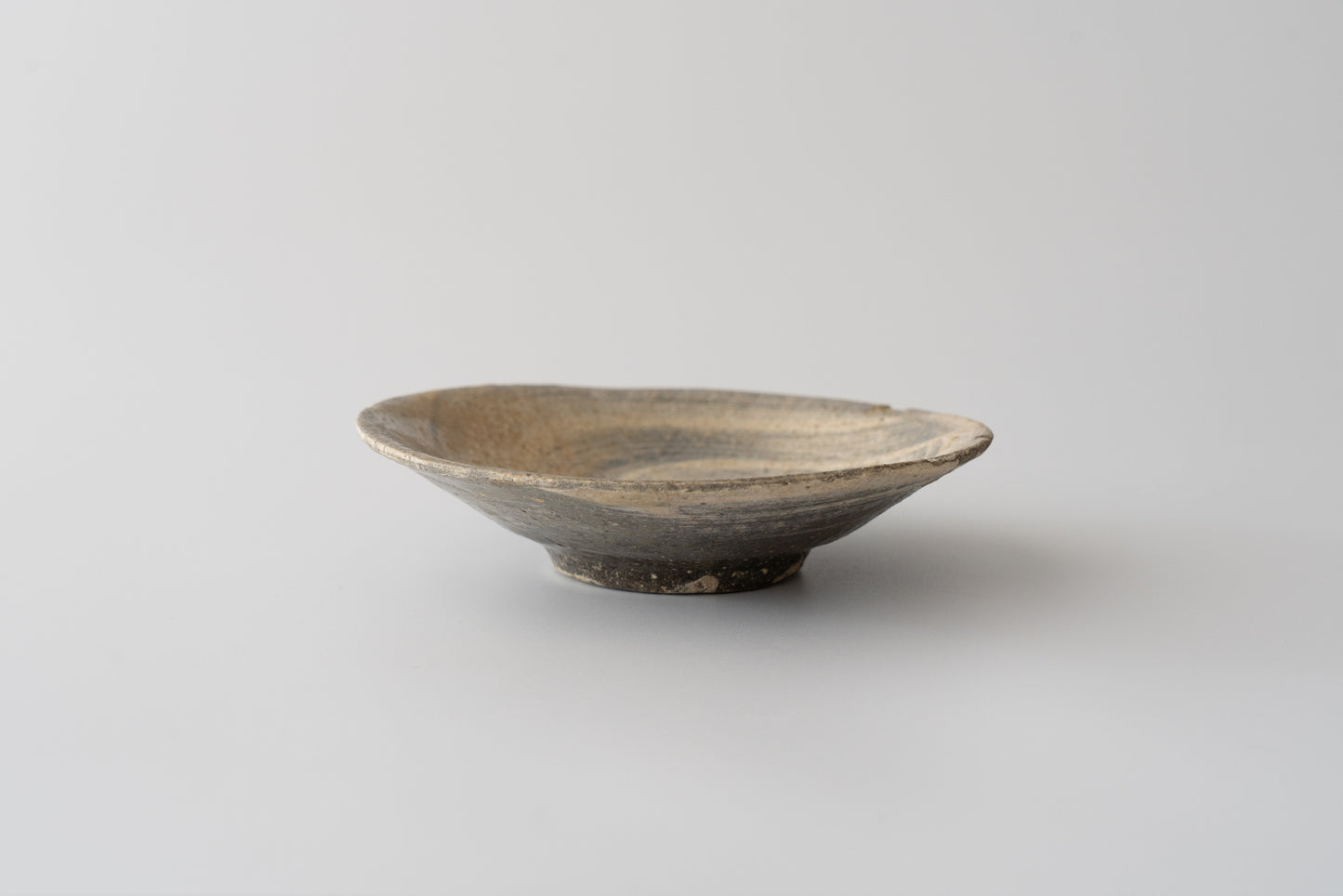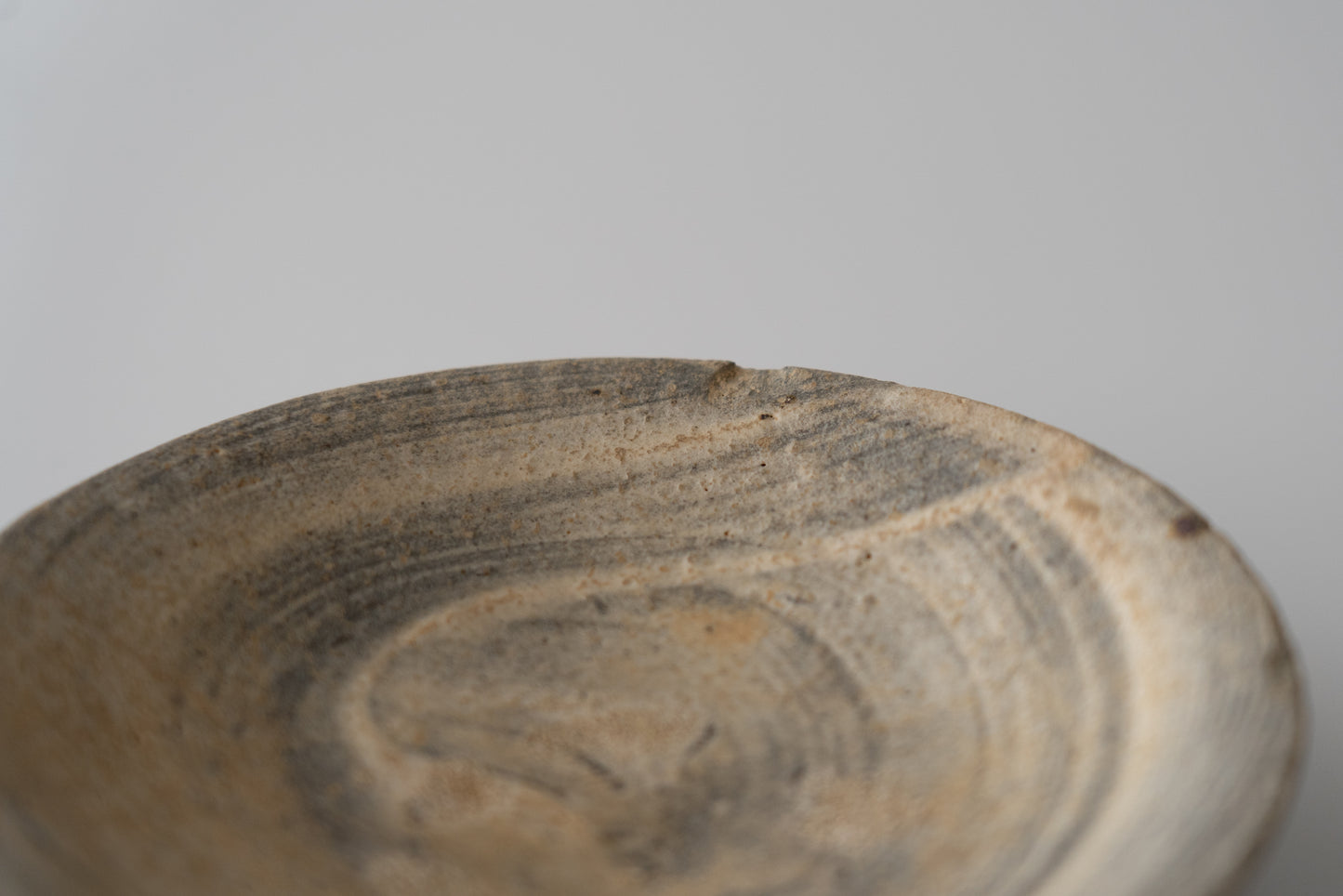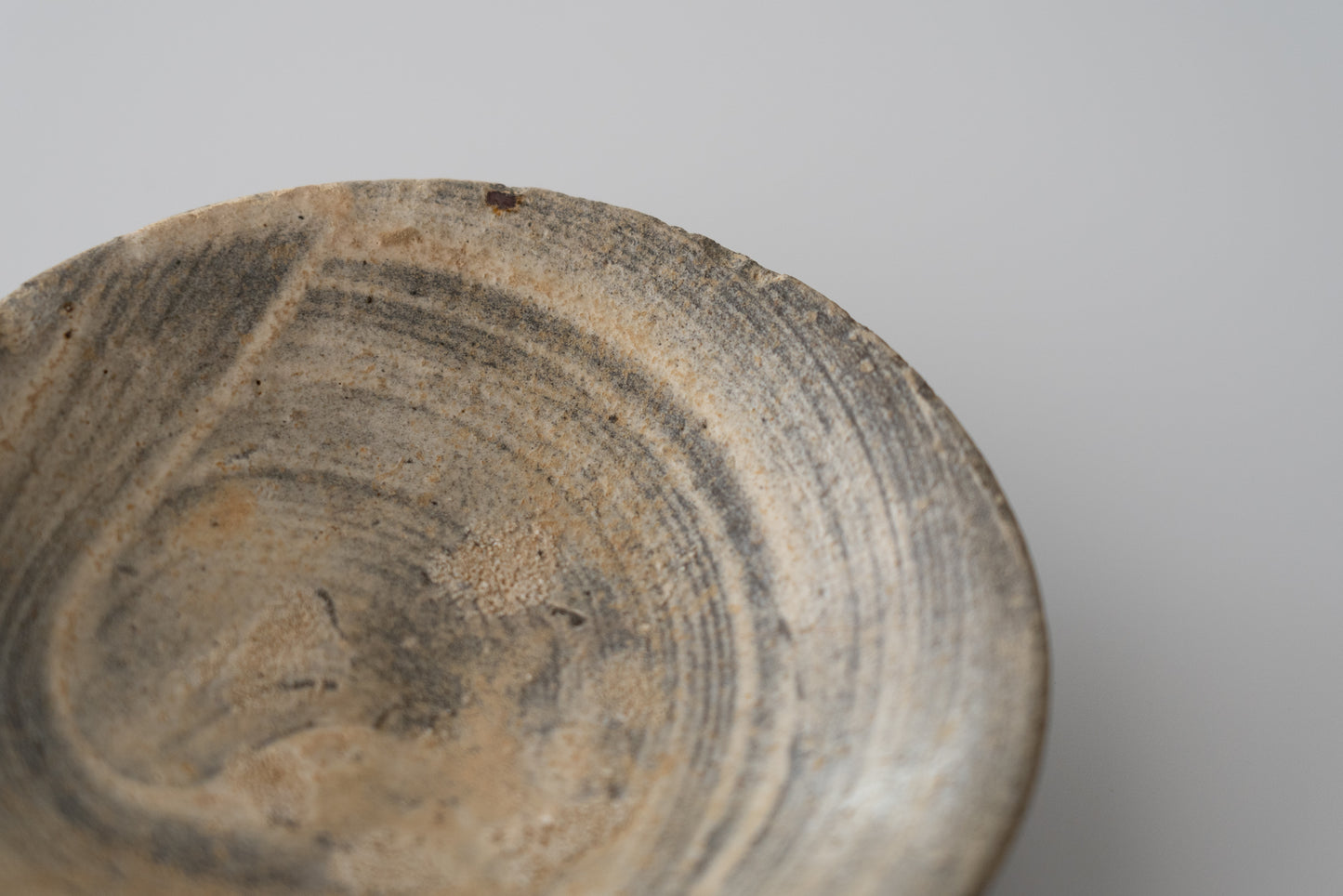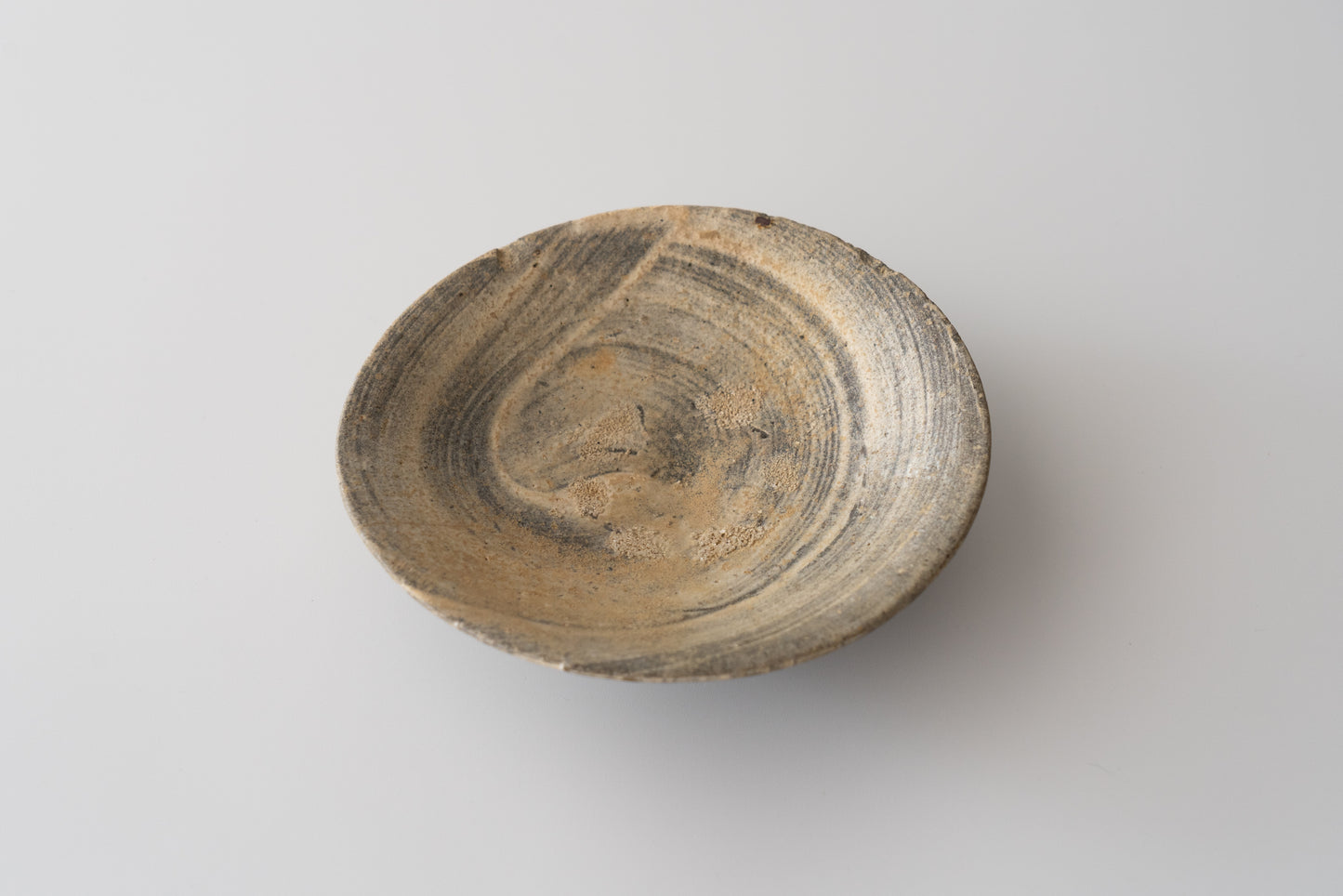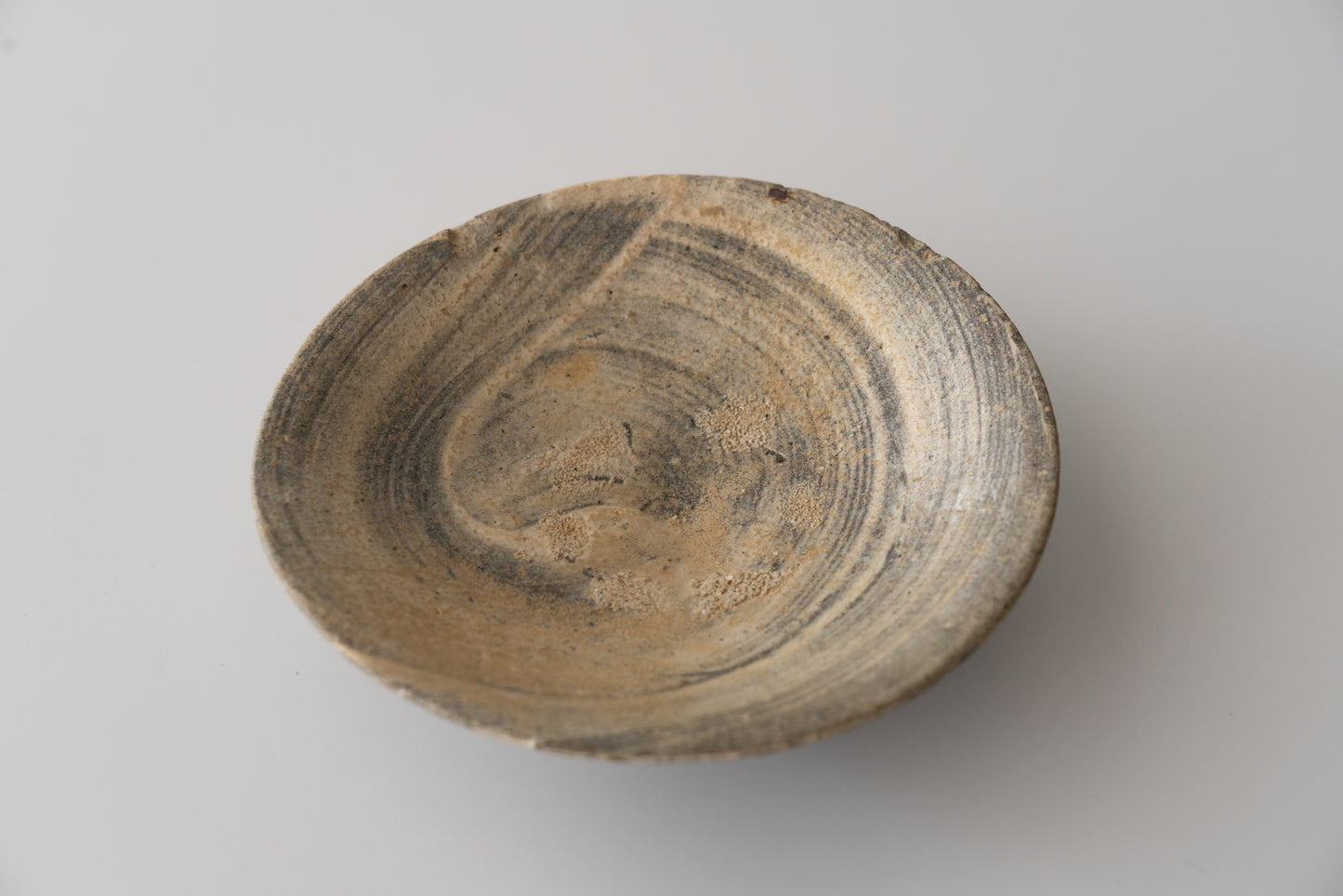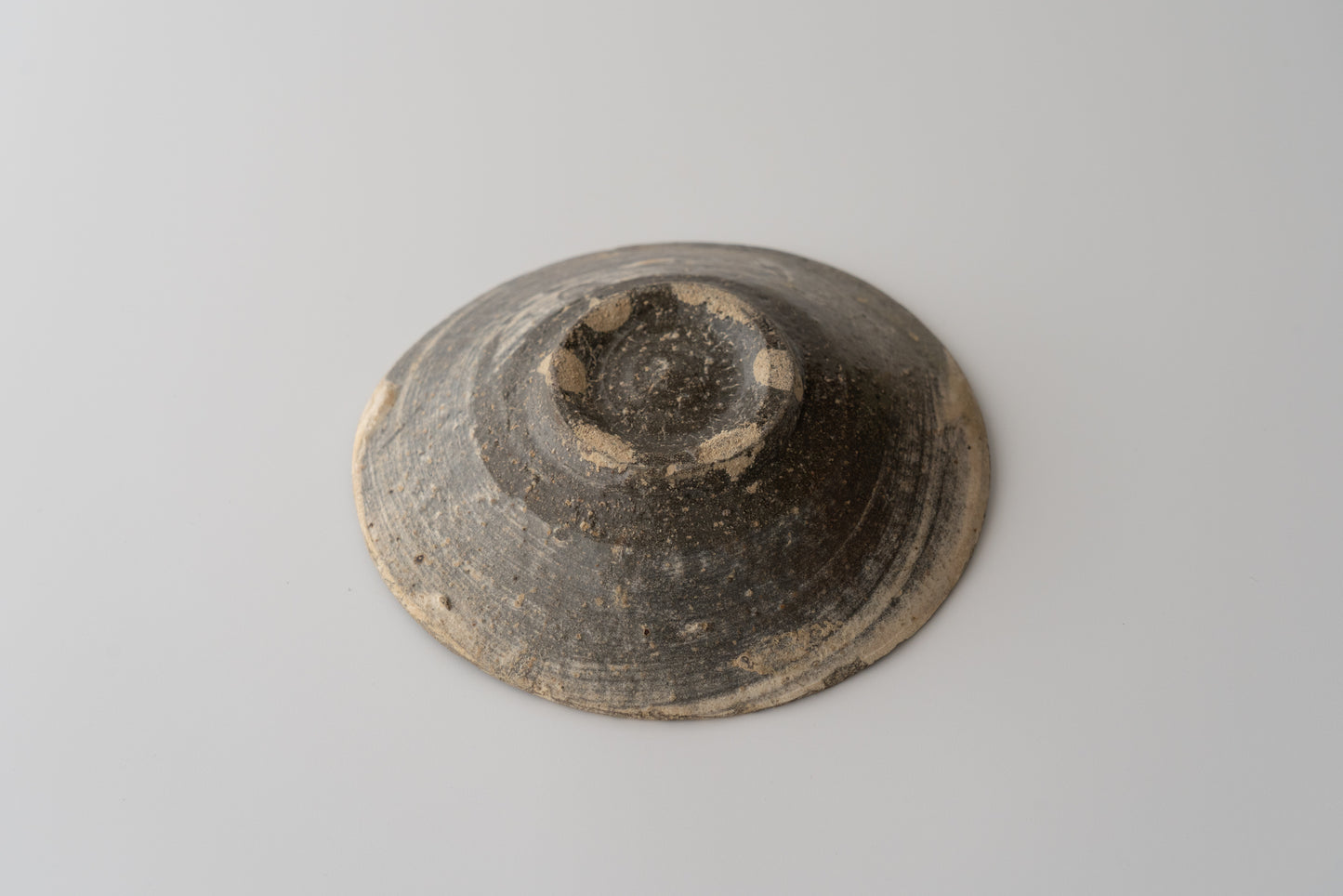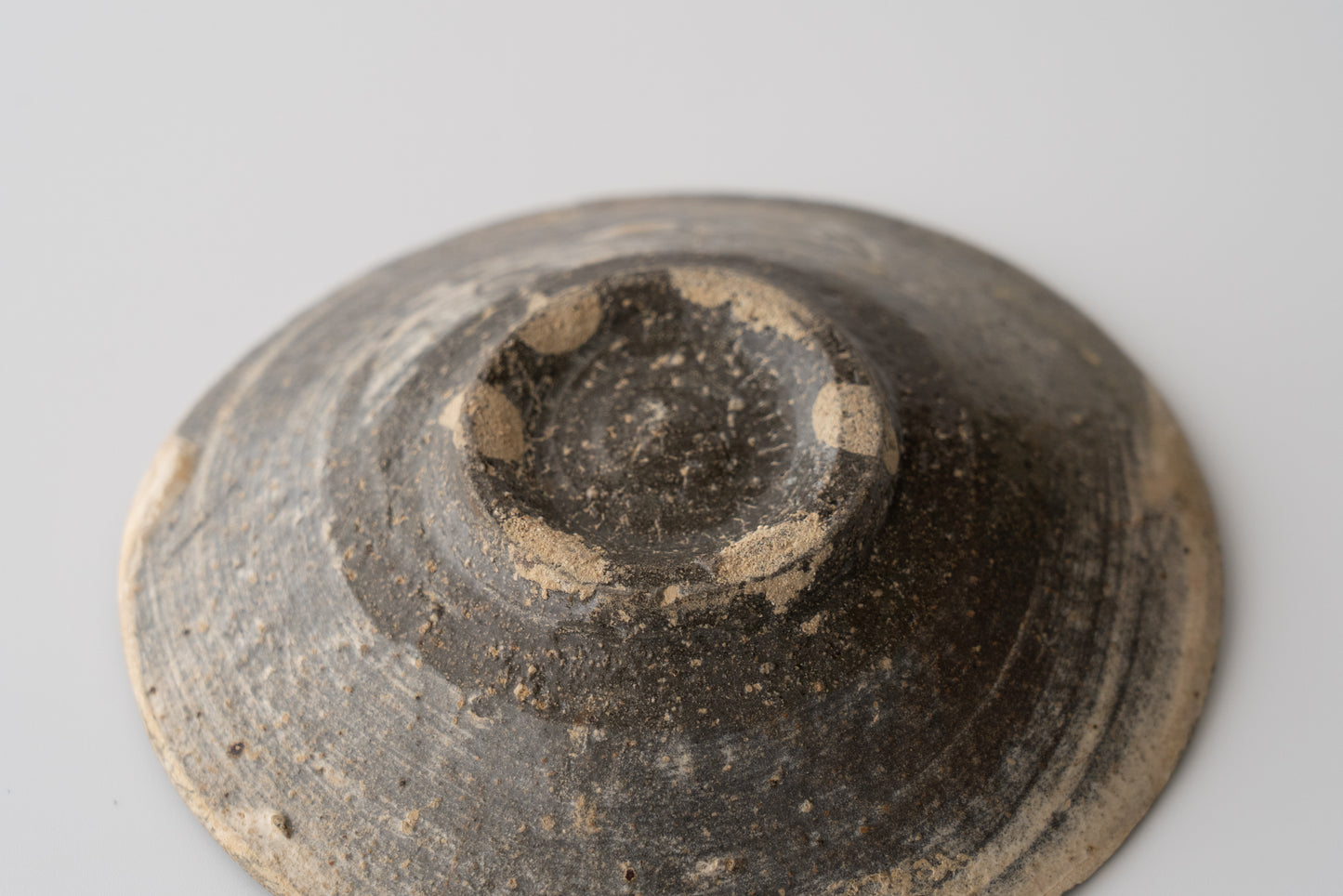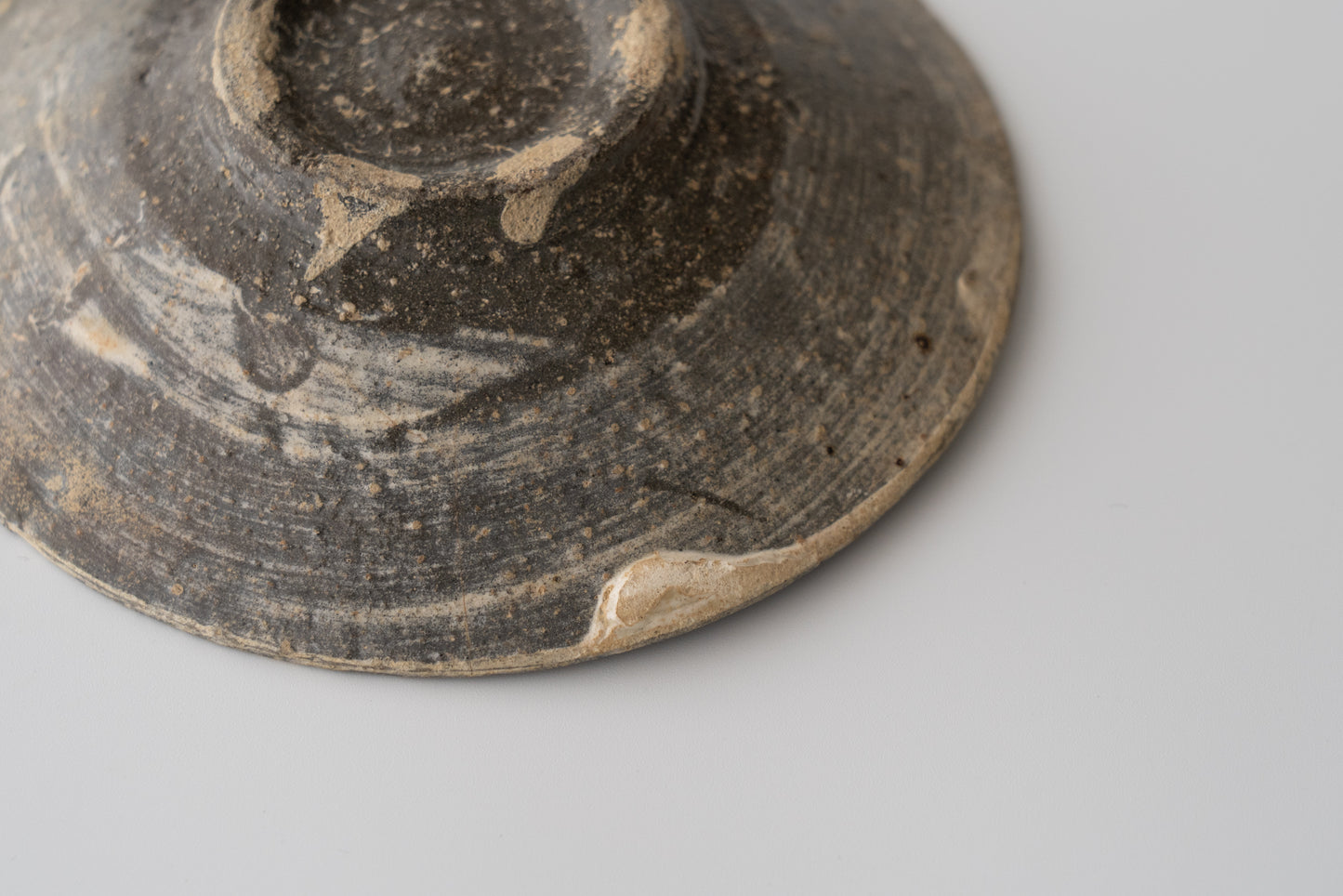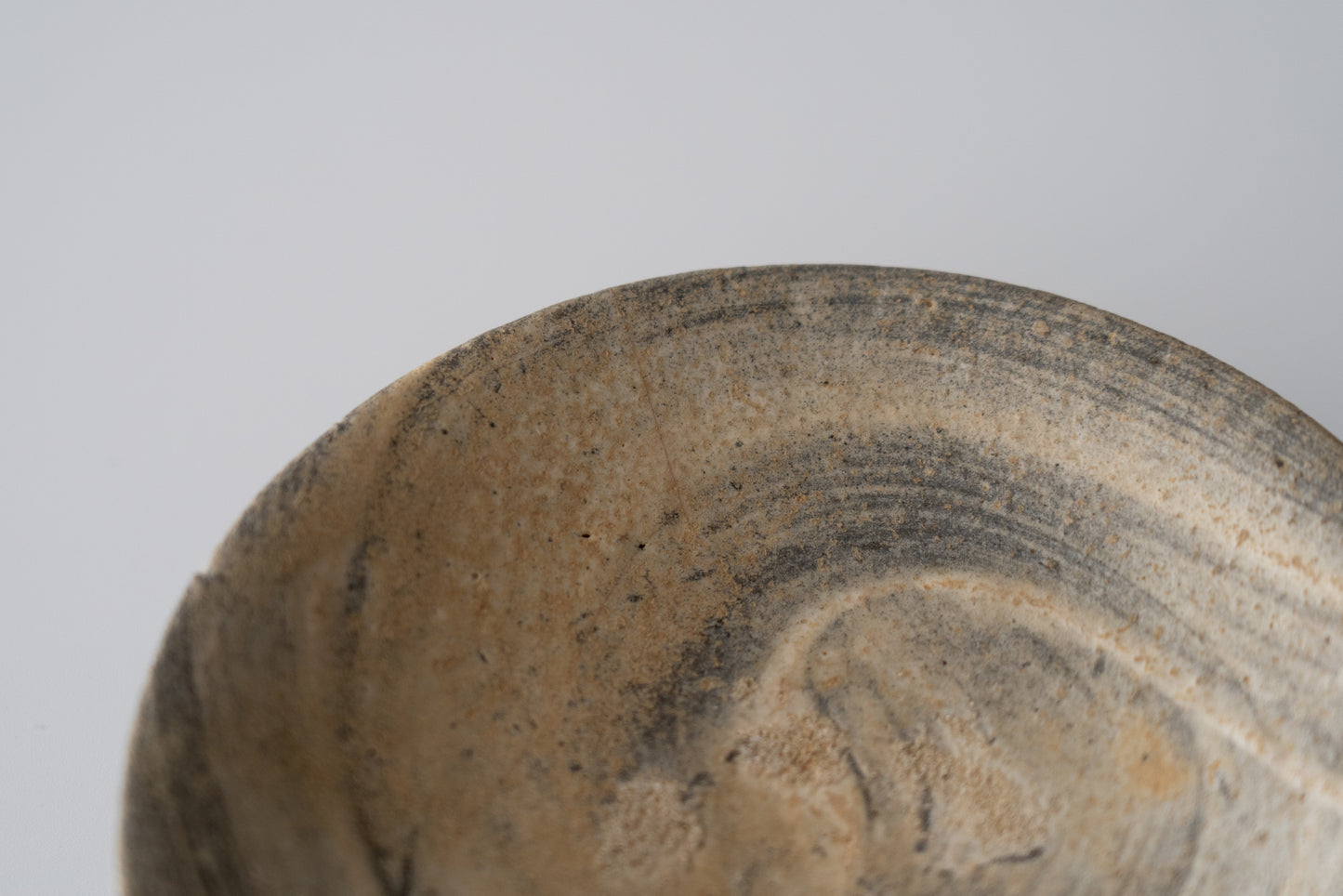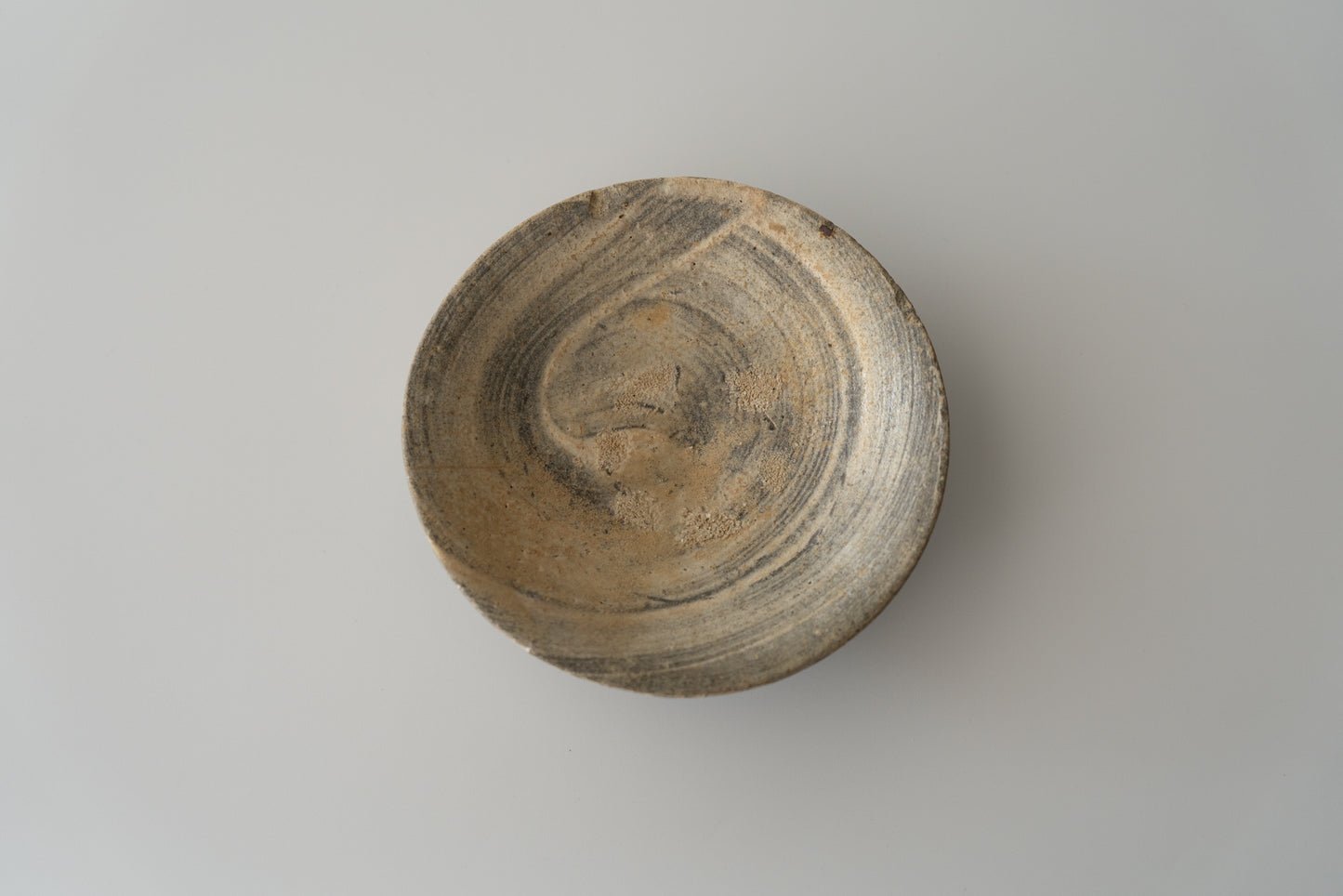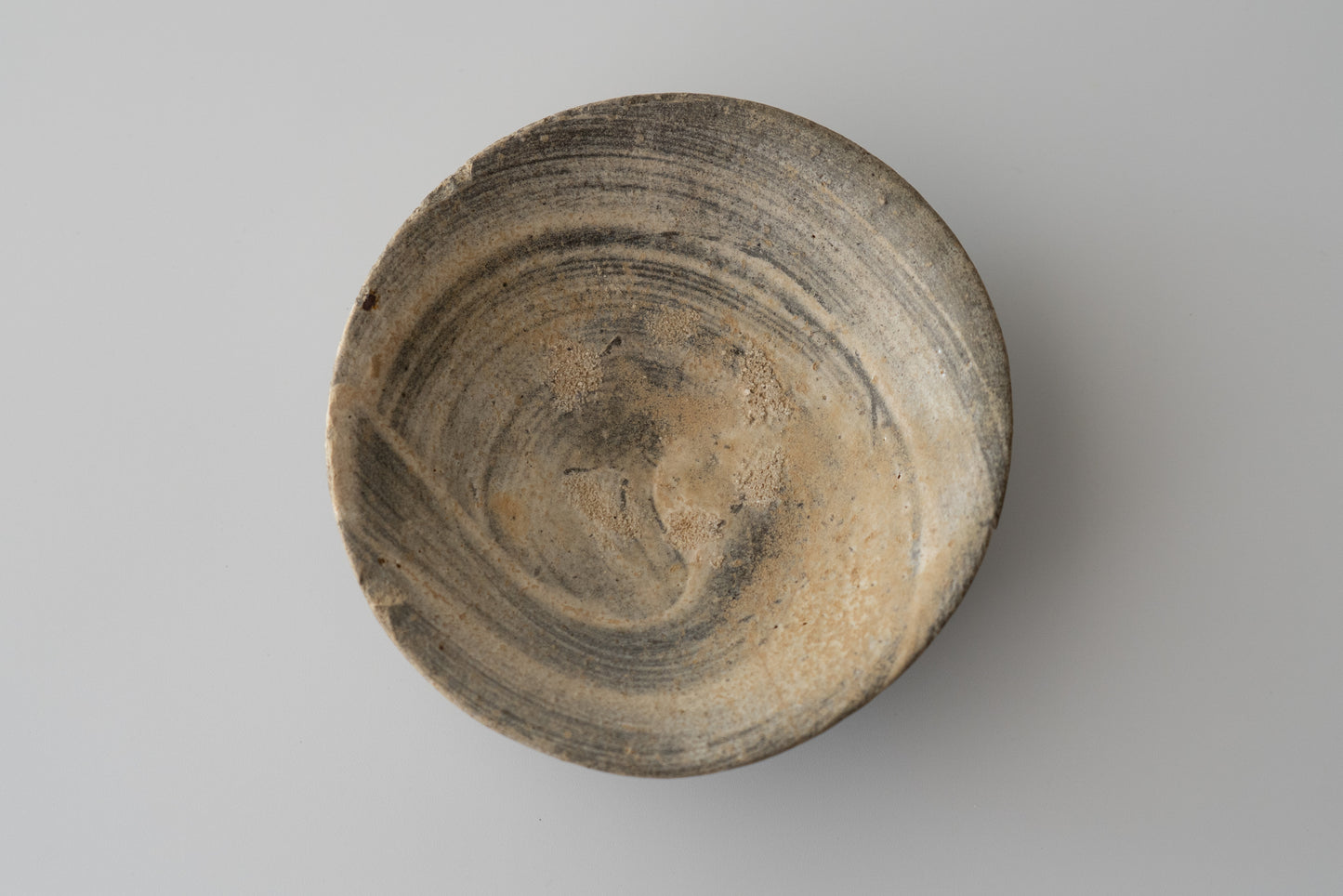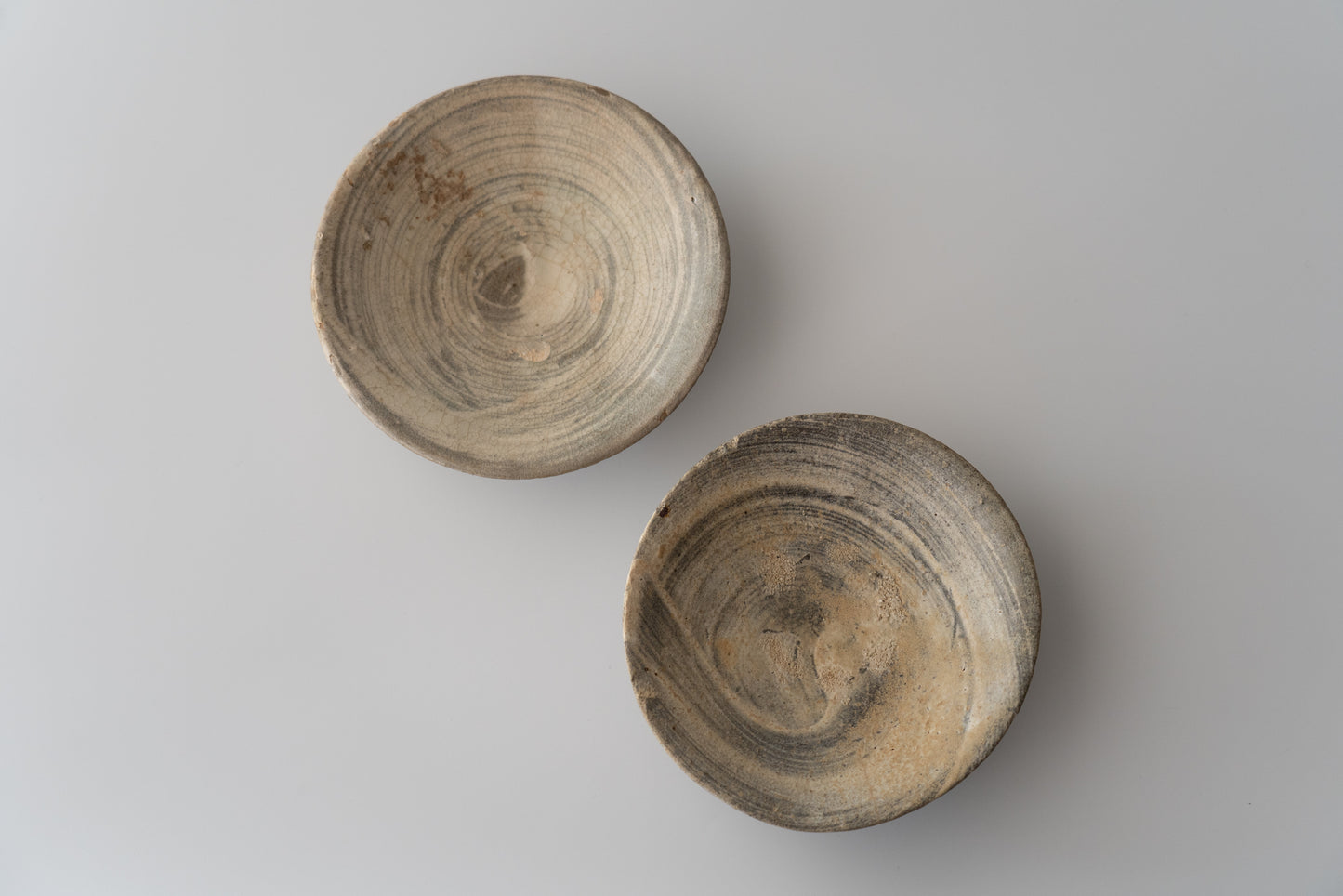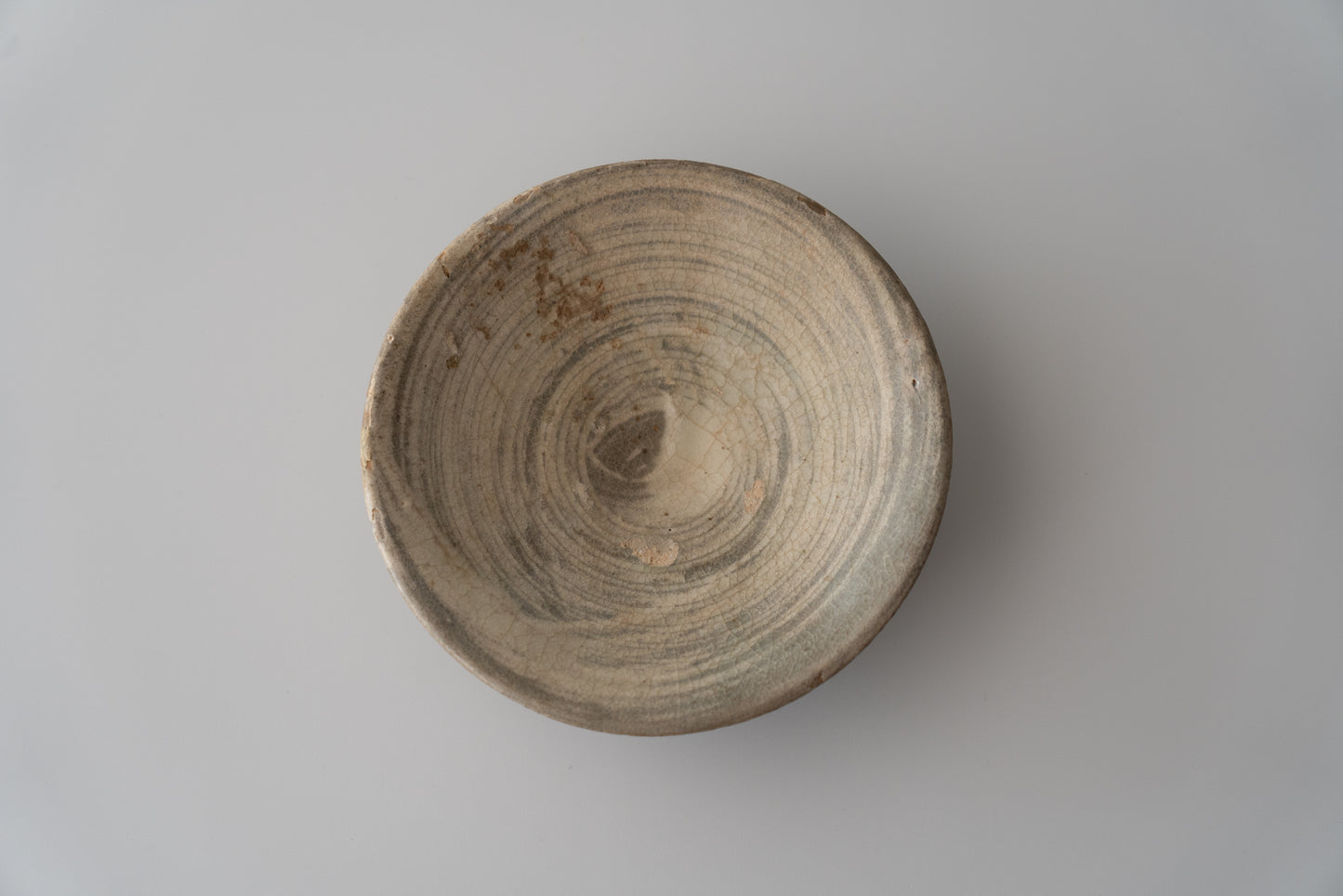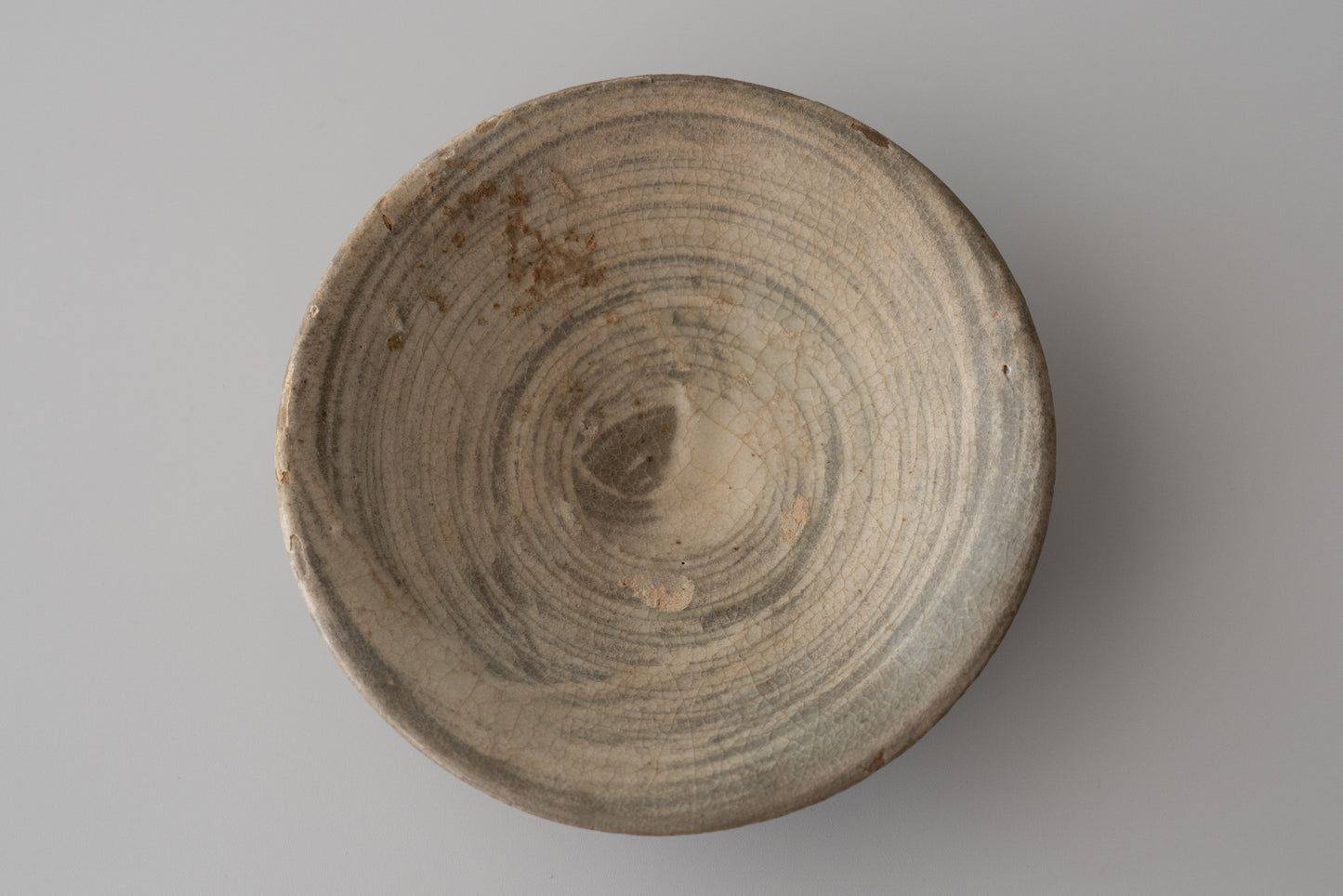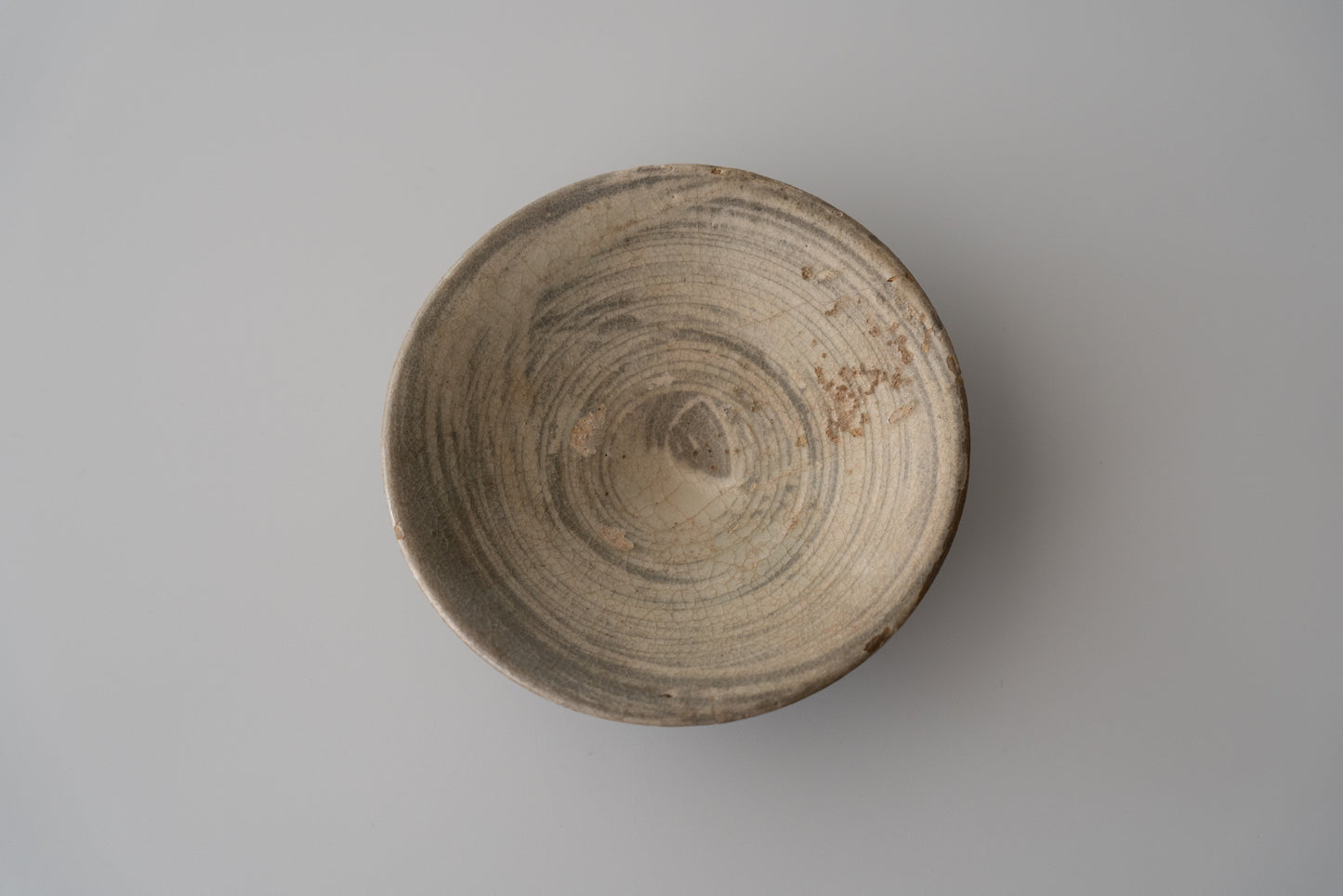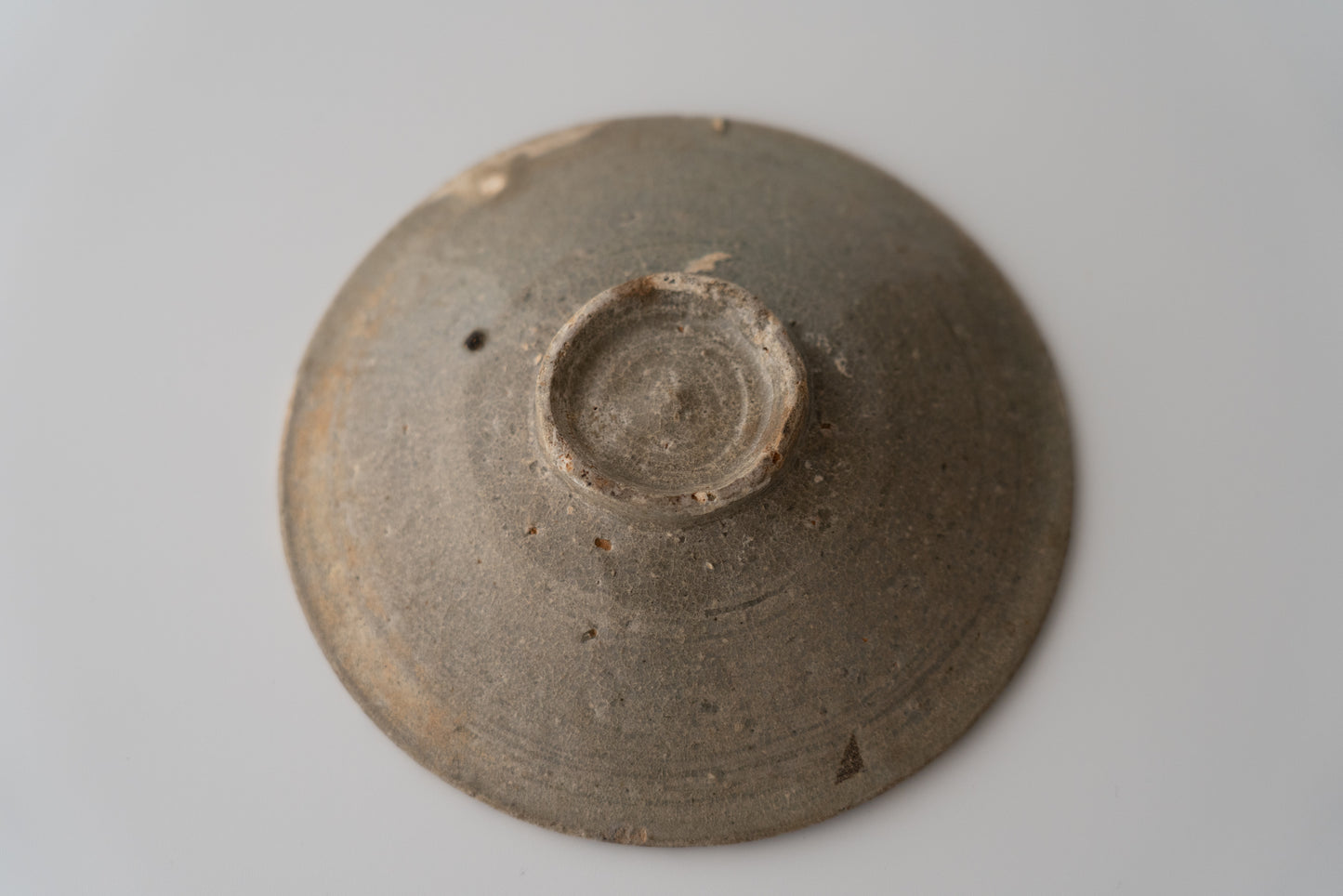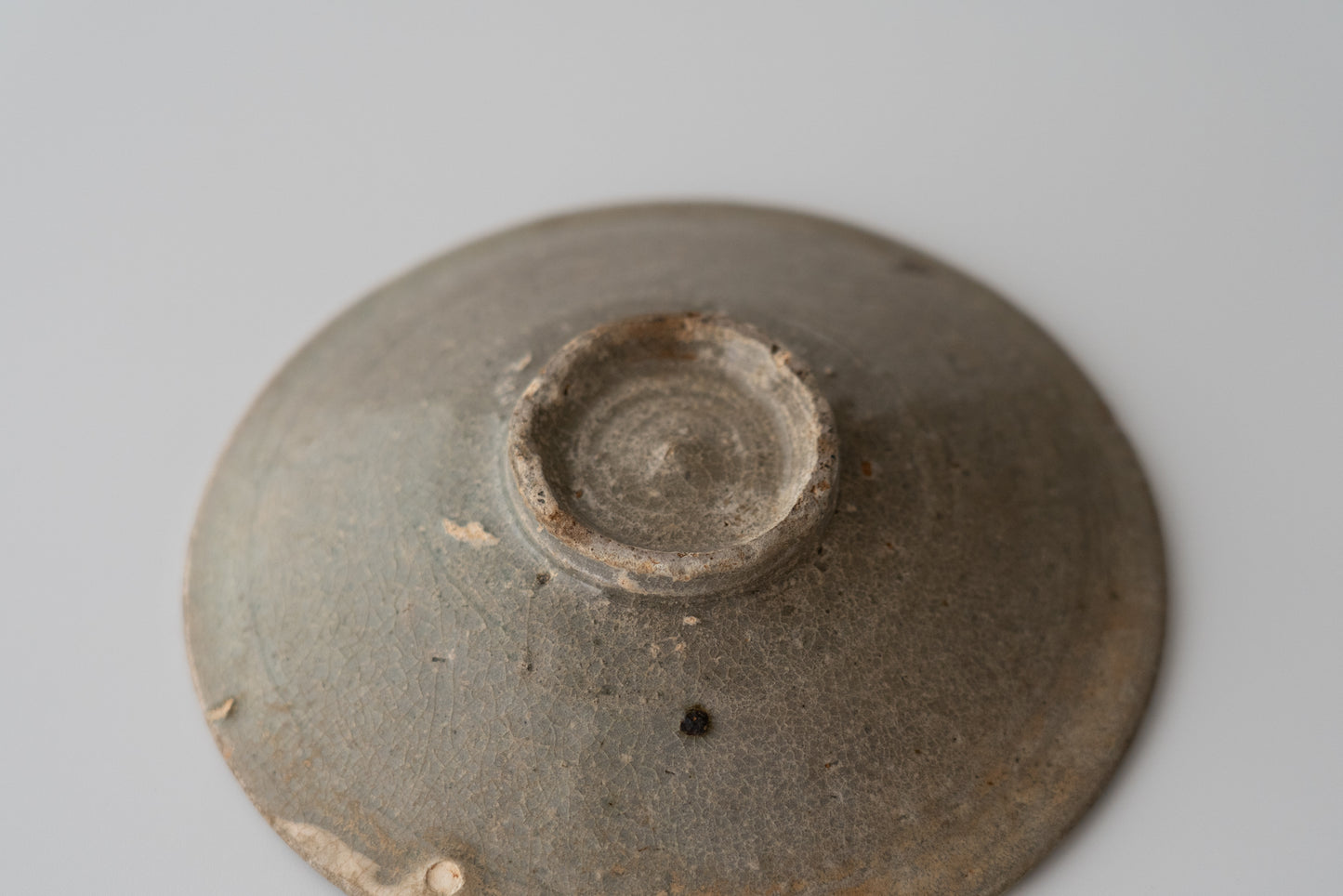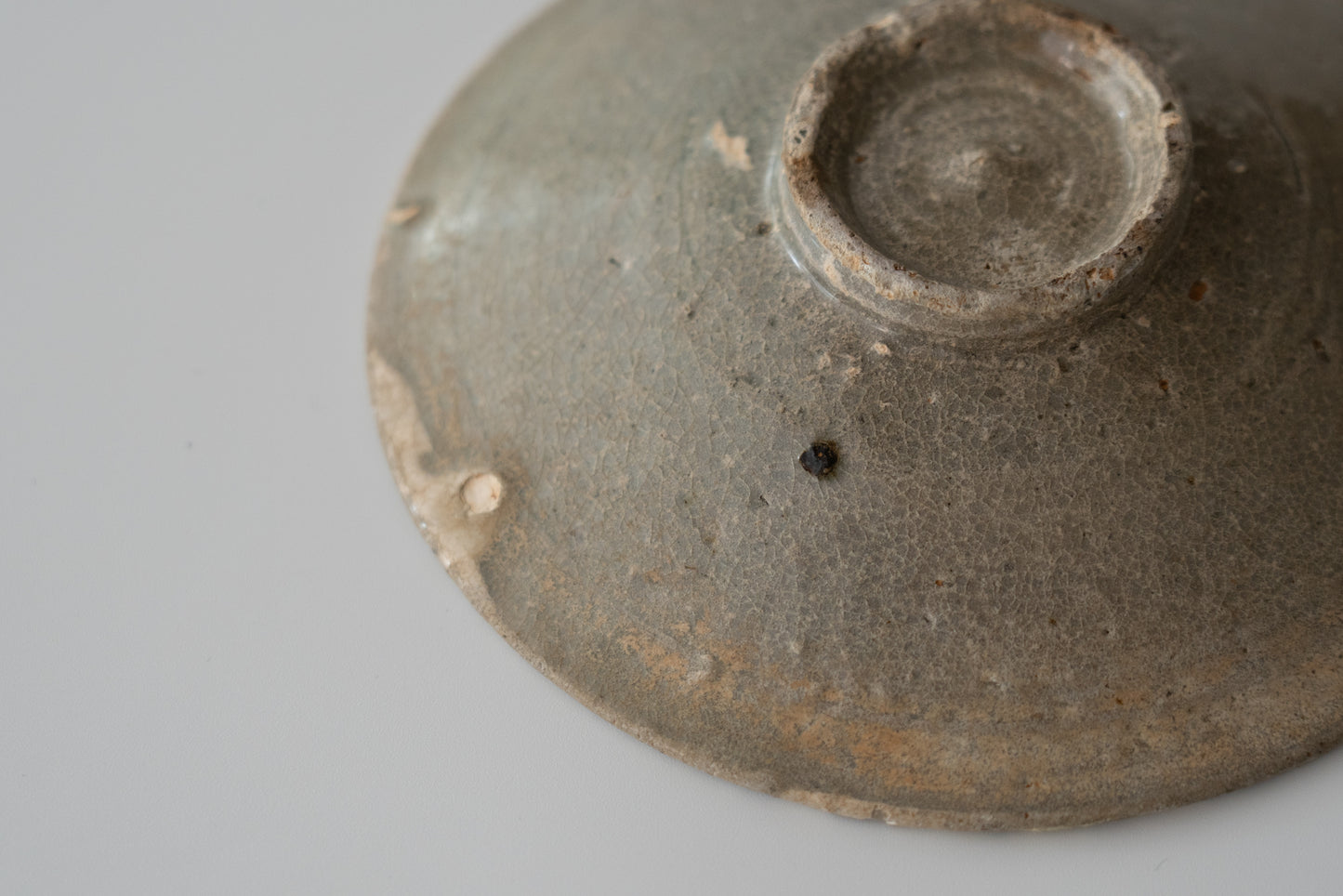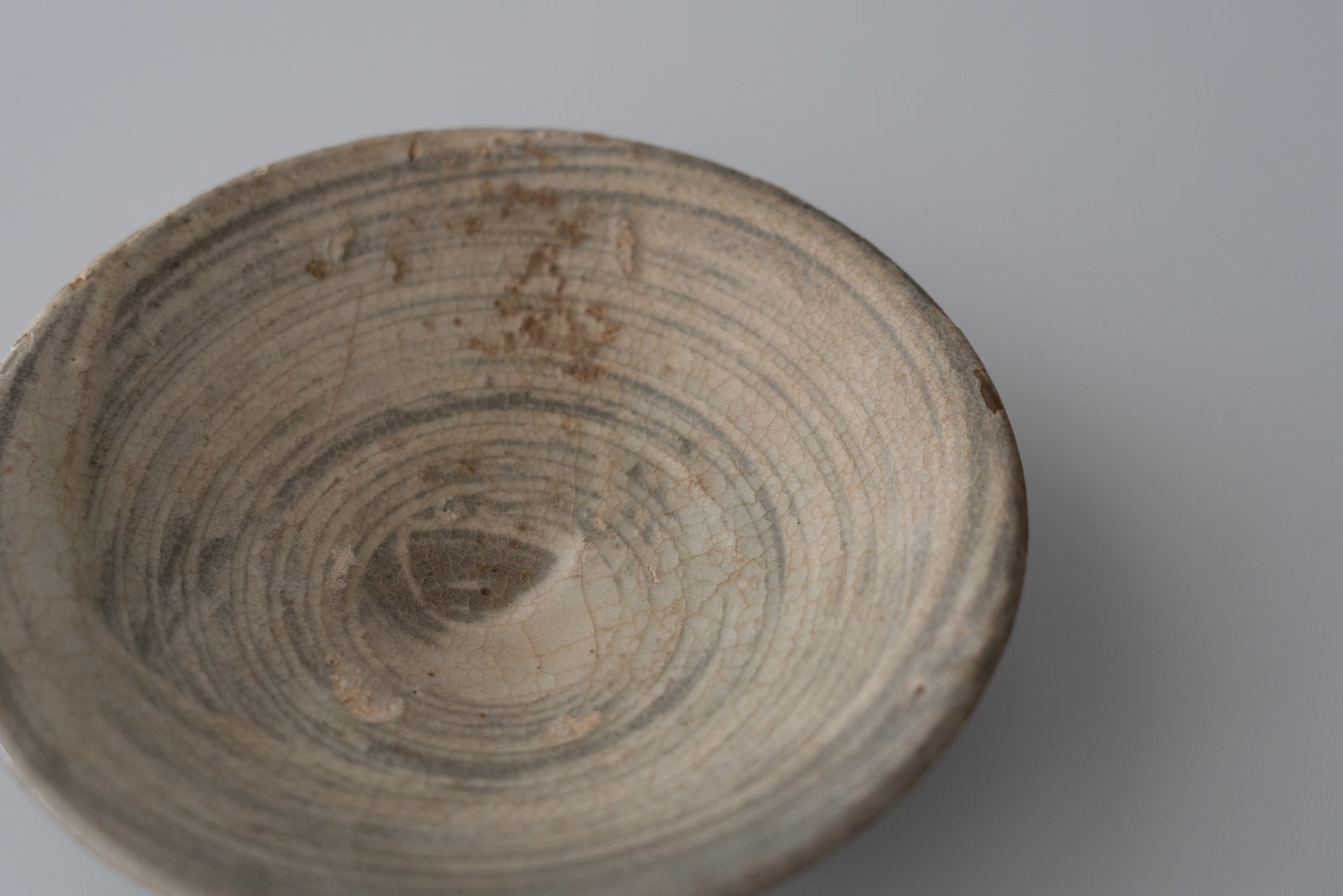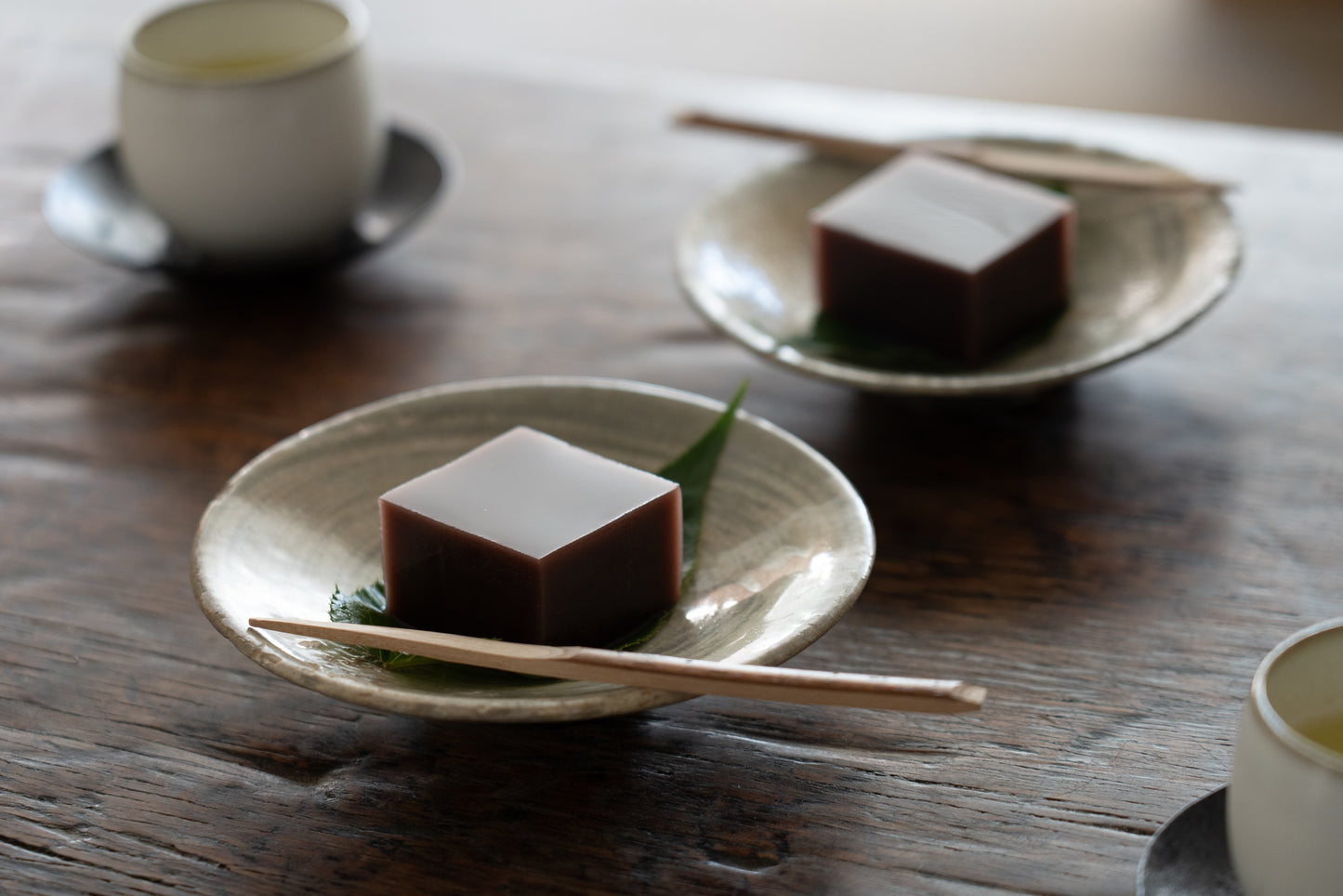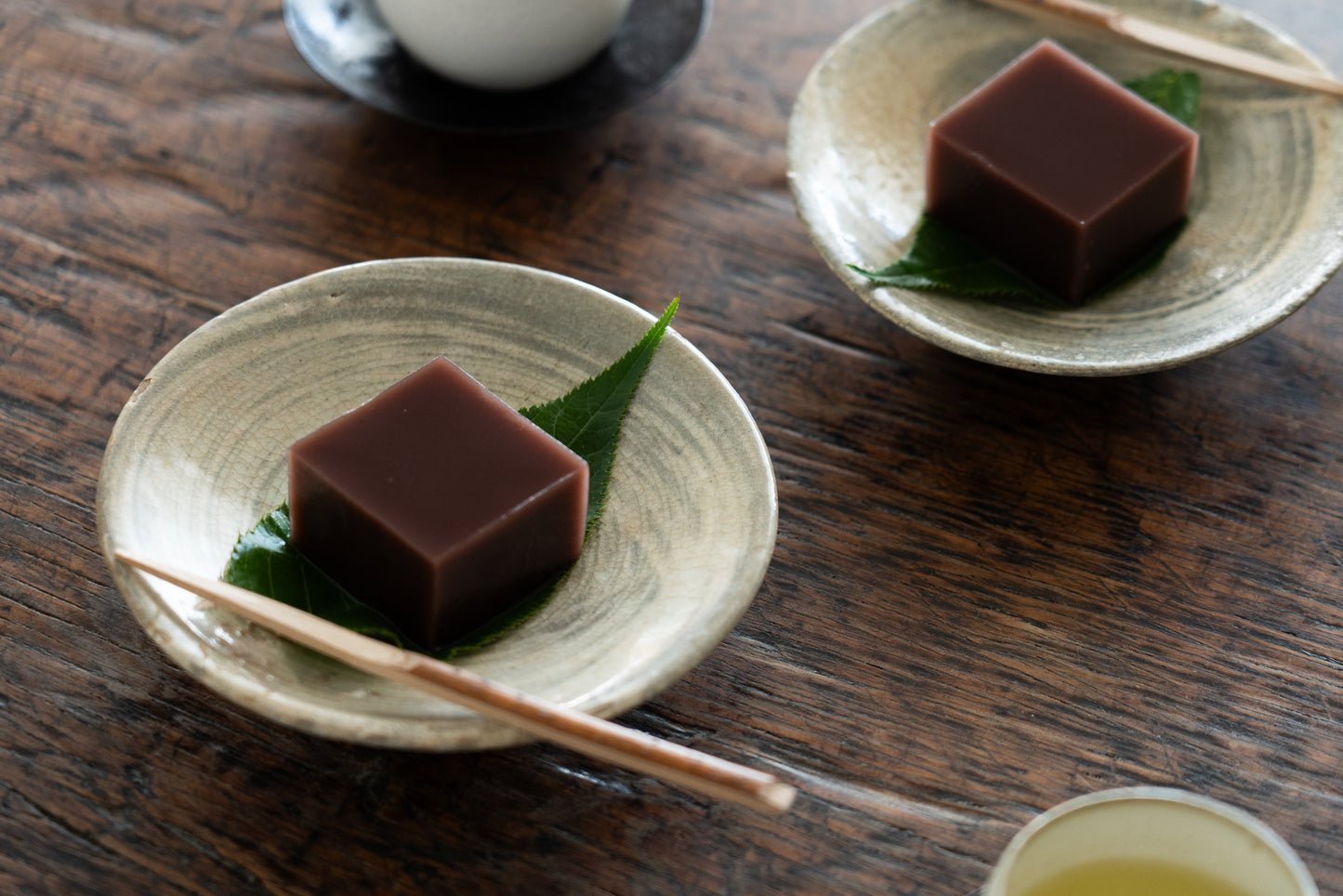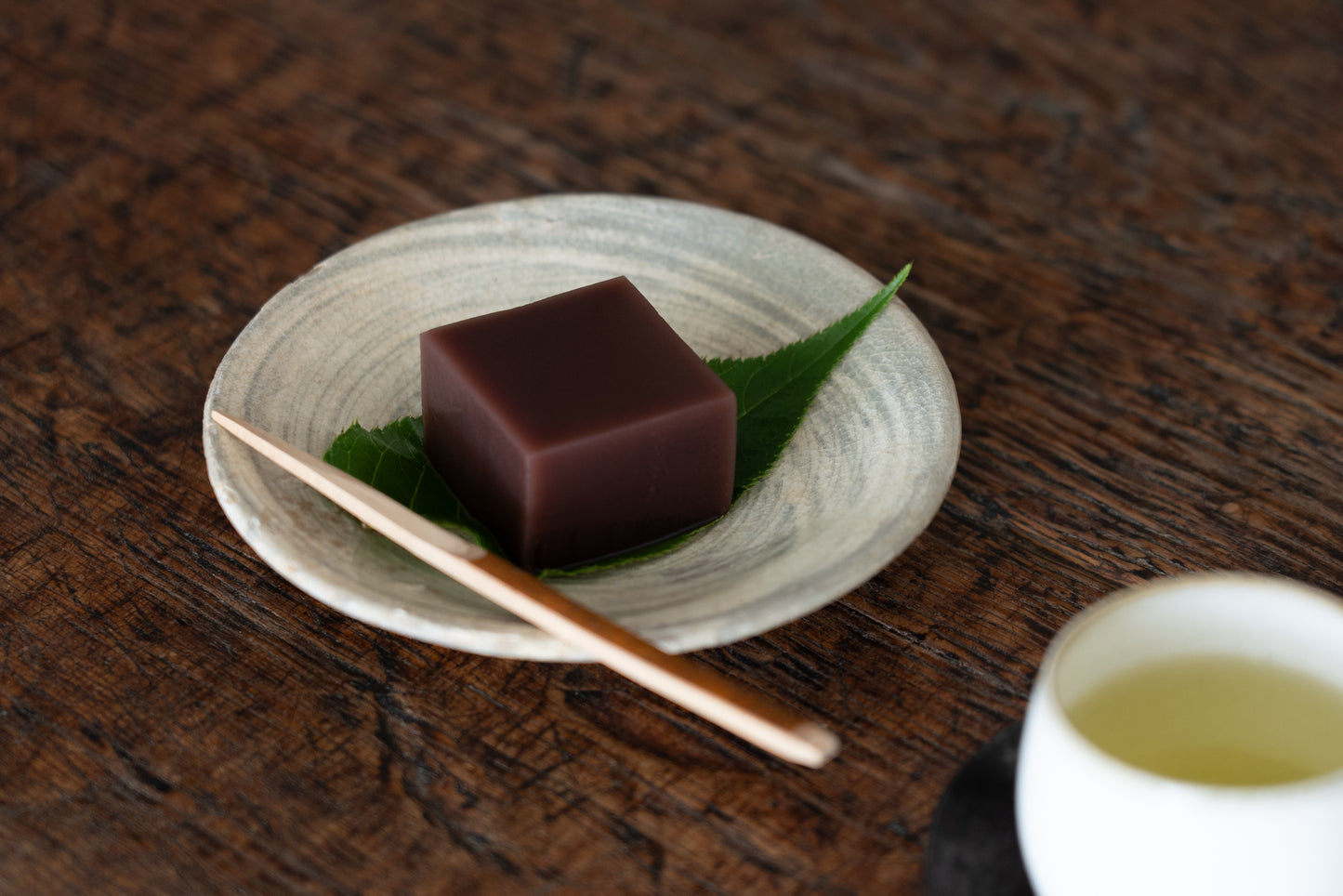A set of two plates with brush pattern, Buncheong ware
- Region/Era Korean Peninsula / Joseon Dynasty 15th-16th century
- Size H3.3×W13.7×D13.7 / H3.4×W14.2×D14.2
- Condition One piece has a hairline crack about 3cm.
- Accessory none
- No. 42nk-9091
We were able to purchase two brushed plates that are well balanced and appealing, with the colors of the clay and white mud and the force of the brush strokes.

The first piece shows dark gray soil with a high iron content. It is clearly a soil color that can be identified as being from Gyeryongsan. The dynamic white clay brushstrokes stand out on top of the clay.
The brush strokes do not fit inside the plate, but are clean and uninterrupted. The brush strokes are as if they were made in a single stroke, giving a refreshing feeling. The back side is also covered with white clay, and the glaze has a matte finish.
There is a 3cm hole in one edge, but it is so inconspicuous that it cannot be seen from the back.

The other piece is a pale grey clay body. This one also has bold brush strokes.
Perhaps because the glaze is applied thickly, there are few uneven areas between the white clay and the clay body, giving it a neat impression. The glaze has a glossy finish. The small foot that can be seen when you turn it over is also attractive.
Both pieces have no noticeable snags or peeling glaze on the outside, so they are nice to use without any worries.

The production period corresponds to the early Joseon period, from the late 15th century to the 16th century.
The early Joseon period was a time when Buncheong ware, known as Samdo, was the main product. Among them, Hakeme ware was produced during a period when decoration using stamps, known as Inka, was being advanced to a new stage of white paint application using a brush.
The theme of Buncheong ware was "how to quickly whiten the vessel," but it was people in later generations who discovered the interest in the unrestrained and powerful brush strokes that were developed in the process.
The relaxed feel, which is by no means intentional, is an appealing quality that can only be found in originals and cannot be found in copies.

This brushed plate is a useful size for serving sweets or individual dishes. (We usually serve sweets on this type of plate at our restaurant.)
They are sold as a pair, with two pieces that are well balanced in size and shape.
[Something was put on it]
To pick up and see the actual item in the gallery.
Reservation